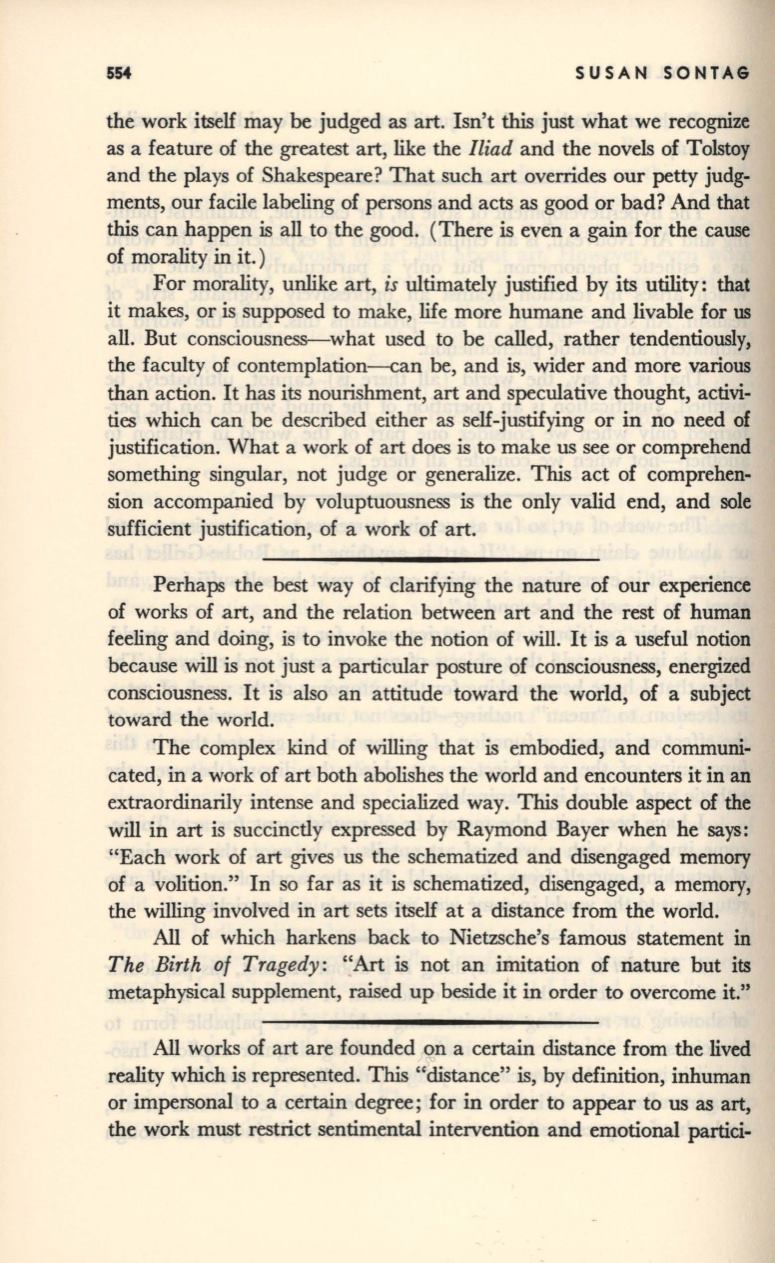
554
SUSAN SONTAG
the work itself may be judged as art. Isn't
this
just what we recognize
as a feature of the greatest art, like the
Iliad
and the novels of Tolstoy
and the plays of Shakespeare? That such art overrides our petty judg–
ments, our facile labeling of persons and acts as good or bad? And that
this can happen
is
all to the good. (There is even a gain for the cause
of morality in it.)
For morality, unlike art,
is
ultimately justified by its utility: that
it makes, or is supposed to make, life more humane and livable for us
all. But consciousness-what used to be called, rather tendentiously,
the faculty of contemplation--can be, and
is,
wider and more various
than action. It has its nourishment, art and speculative thought, activi–
ties which can be described either as self-justifying or in no need of
justification. What a work of art does is to make us see or comprehend
something singular, not judge or generalize. This act of comprehen–
sion accompanied by voluptuousness
is
the only valid end, and sole
sufficient justification, of a work of art.
Perhaps the best way of clarifying the nature of our experience
of works of art, and the relation between art and the rest of human
feeling and doing, is to invoke the notion of will. It
is
a useful notion
because will is not just a particular posture of consciousness, energized
consciousness. It is also an attitude toward the world, of a subject
toward the world.
The complex kind of willing that is embodied, and communi–
cated, in a work of art both abolishes the world and encounters it in an
extraordinarily intense and specialized way. This double aspect of the
will in art is succinctly expressed by Raymond Bayer when he
says:
"Each work of art gives us the schematized and disengaged memory
of a volition." In so far as it
is
schematized, disengaged, a memory,
the willing involved in art sets itself at a distance from the world.
All of which harkens back to Nietzsche's famous statement in
The Birth of Tragedy:
"Art
is
not an imitation of nature but its
metaphysical supplement, raised up beside it in order to overcome it."
All works of art are founded on a certain distance from the lived
reality which is represented. This "distance"
is,
by definition, inhuman
or impersonal to a certain degree; for in order to appear to us as art,
the work must restrict sentimental intervention and emotional
partici-


